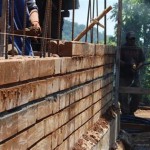Mini Tree House Plants: A Beginner's Guide to Growing Fantastic Foliage
Mini tree house plants are a fantastic way to bring the beauty of nature indoors, adding a touch of greenery and tranquility to your living space. These miniature trees, often scaled-down versions of their outdoor counterparts, offer endless possibilities for creating unique and eye-catching displays.
Choosing the Right Mini Tree House Plant
When selecting a mini tree house plant, consider factors such as size, light requirements, and growth rate. For beginners, easy-care species like Ficus, Dracaena, and Serissa are ideal. If you have a bright, sunny spot, consider a Crassula or Euphorbia. For low-light conditions, opt for Aspidistra or Aglaonema.
Creating a Supportive Environment
Mini tree house plants thrive in environments that mimic their natural habitats. Provide adequate light, either through natural sunlight or grow lights. Water regularly, but avoid overwatering, as soggy soil can lead to root rot. Use a well-draining potting mix to ensure proper aeration.
Training and Pruning
To maintain a miniature size and shape, regular training and pruning are essential. Use wire or bamboo stakes to guide branches and encourage upward growth. Pinch off new shoots to promote bushier foliage. Remove any dead or diseased leaves or branches to keep your plant healthy.
Fertilization and Repotting
Feed your mini tree house plant regularly with a balanced, diluted fertilizer during the growing season. Repot when roots become overcrowded or the soil becomes compacted. Use a slightly larger pot with fresh potting mix and provide support for the branches as needed.
Common Challenges
Mini tree house plants can face some common challenges: Pests like aphids or mealybugs can attack foliage, while fungal diseases such as powdery mildew or root rot can damage the plant. To prevent these problems, provide proper care and inspect your plants regularly. Use insecticides or fungicides as needed to address any infestations or infections.
Enjoy the Beauty of Mini Tree House Plants
With proper care and attention, mini tree house plants can thrive indoors for years to come. They make excellent additions to any room, creating a sense of tranquility and bringing the beauty of nature into your living space. Whether you're a seasoned plant enthusiast or just starting your houseplant journey, mini tree house plants offer a unique and rewarding way to connect with the natural world.

You Can Now Get A Mini Treehouse For Your House Plants And They Re Absolutely Adorable

Tiny Treehouse Plant Salon

Made A Mini Treehouse Houseplants Miniatyrträdgård Plantering Inomhusväxt

7 Mini Indoor Trees To Bring Life Your Desk Well Good

Tiny Tree Houses For Houseplants Adorable Mini Houseplant

Miniature Tree Houses For Houseplants Are Just Perfect Fairies House Trees

You Can Now Get A Mini Treehouse For Your House Plants And They Re Absolutely Adorable

Botanopia Mini Tree House For Plants Bloomling

Plant Mini Treehouse

You Can Now Get A Mini Treehouse For Your House Plants And They Re Absolutely Adorable








